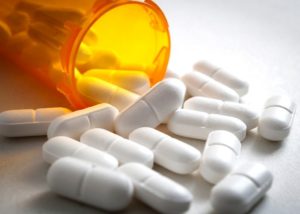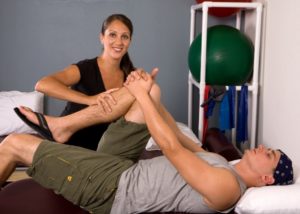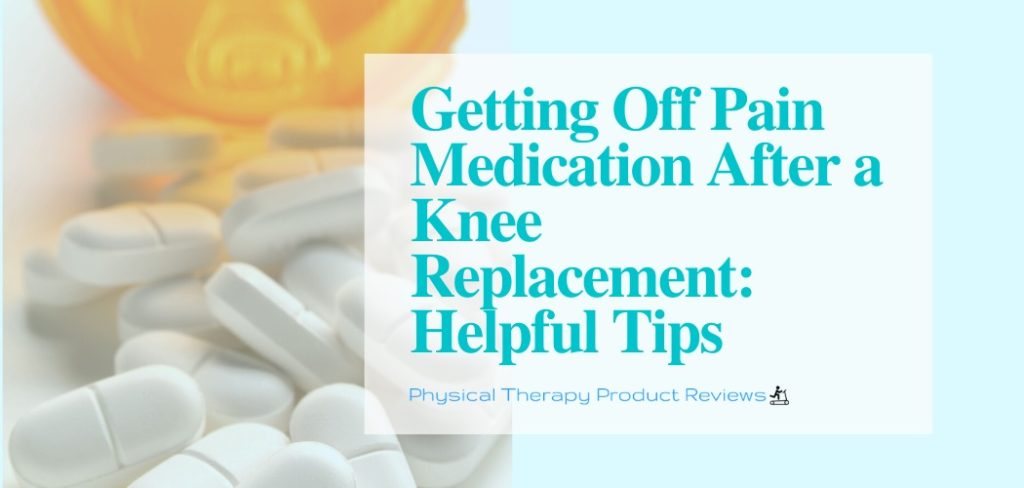When used properly pain management medication containing opioids can be extremely beneficial to someone who suffers from chronic or post-operative pain. It can help someone get back to doing the things they love to do. The downfall of using opioids is that they are extremely addictive and can cause serious digestive issues. How can you quickly wean yourself off of pain medication and continue to live pain-free? 
Take your pain medication as directed. If you find yourself becoming resistant to the effects; discuss your medications with your doctor and create a plan for weaning yourself off to avoid dangerous side effects and digestive issues. Try alternative treatments.
Continue reading if you or someone you know is currently taking pain medication containing opioids and you would like to learn more about the effects they have on your body and how to safely wean yourself off of them.
Rewards and Risks of Using Opioids for Pain Relief
The obvious reward that comes from using opioids is pain relief. Opioids are typically prescribed for short-term use. They are used for acute pain due to surgery, injury from an accident, or for those suffering from chronic pain that has tried all other alternatives.

The most immediate side effect and danger of using opioids is the risk of becoming too dependent on them. If you find that you are not getting as much relief from taking them and feel as though you need to increase your dose, it is time to speak with your prescriber and discuss a plan for weaning yourself off of them and beginning alternative treatments.
There is a condition called Opioid Induced Hyperalgesia which is where the drugs begin to have the opposite effect that you are desiring. Instead of relieving your pain, it can actually cause you to feel like you are in more pain; which in return causes you to take more pills and causes an even greater risk of becoming addicted.
Opioid Withdrawal Symptoms
The following are common symptoms of withdrawal when weaning off of opioid pain medications.
- Cold chills
- Diarrhea
- Headaches
- Insomnia
- Muscle Spasms/Twitching
- Muscle tension
- Nausea
- Soreness/Pain
- Stomach cramps
- Vomiting
Opioid Digestive Dangers
Taking opioid pain medication can absolutely wreak havoc on your digestive system if you are not staying properly hydrated and eating the right foods. In some cases even if you are drinking and eating properly you will still experience some digestive issues from using these types of medicines.
Typically people who have prescribed opioids for a short period of time 2 weeks or less, will not have complications; most of the time individuals who are taking them for extended periods of time experience the most digestive discomfort.
Opioids cause your digestive system to slow down. They absorb the water in your digestive tract which causes very hard, dry stools; this causes Opioid Induced Constipation.

A very uncomfortable side effect of constipation are hemorrhoids caused by excessive straining while trying to have a bowel movement. Gastroesophageal reflux is another negative side effect of taking opioids. It is caused by the slowing of digestion.
Most Commonly Prescribed Opioid Post Surgery
- Oxycodone
- Oxycodone + Acetaminophen
- Hydrocodone
- Hydrocodone + Acetaminophen
- Meperidine
- Morphine
- Fentanyl
Recognizing Signs of Addiction to Opioid Pain Medications
It is so easy to become addicted to these types of medications. They trick your brain into thinking that you have to have them. The more you take the more tolerance you build up and the vicious cycle begins.
The more you take, the more you have to take. Below are signs to look for in yourself or any loved ones that may be taking these types of medications.
- Acting jittery, talking fast
- Change in diet/appetite
- Excessively tired and/or sad
- Financial issues
- Getting into trouble with the law
- Hanging out with different people
- Irritable
- Losing interest in activities that normally love to do
- Missing appointments/important events
- Missing work or school
- Mood swings
- Nervous/Anxious
- Not keeping up with personal hygiene
- Odd sleeping schedule
- Saying things that don’t make sense
- Spending a lot of time alone/avoiding people
Communication is Essential to Avoiding Issues
To avoid becoming a victim of addiction, closely communicate with your prescriber. Be sure that you are fully educated on the medications that you or your loved one is being prescribed. Ask questions and follow their instructions strictly to avoid having negative side effects.
If you or a loved one needs help with addiction please visit this website to find addiction recovery specialists in your area. You don’t have to suffer alone. There is help if you are willing to accept it and do the work that it takes to recover.
Alternatives to Opioid Pain Medication
There are many other ways to help relieve your pain without using opioids. Below are some of the ways you can help yourself relieve your pain without using them.
- Aquatherapy
- Elliptical machine/Recumbent Bike
- Ice/Heat
- Massage therapy
- Moving frequently to prevent stiffening
- Over the counter pain relievers such as acetaminophen or naproxen. Avoid taking ibuprofen too often, because it can cause serious issues in your digestive tract, stomach, liver, and kidneys.
- Physical therapy exercises
- Using a compression sleeve
- Using a TENS unit
- Using topical pain cream
- Walking
3 Recommendations to Decrease Pain After a Total Knee Replacement
Move Your Knee
I know it sounds counterintuitive to some, but the best way to help with the pain after a knee replacement is to get it moving. Swelling, stiffness, and pressure all begin to build up within the knee joint. That pressure continues to build the more you sit and keep the knee still. The quickest and best way to get rid of that feeling is to move it. Movement also lubricates the knee joint, taking the pain levels down a few notches.

We recommend people get up and walk every 30-45 minutes to flush the pressure out of the knee. Use your walker and set a timer on your phone to remind you if needed. Don’t let family members serve you, try to get up to get drinks and food so that you have to move.
Finally, we highly encourage using a recumbent bike or elliptical after knee surgery. The easy motion of the recumbent bike is comfortable on the knee and pushes swelling out. It’s a great way to loosen the knee up quickly. You can go to the local gym and use theirs as many times as you want or get one of our favorite recumbent bikes for home.
Use a Topical Pain cream and Cover it with a Knee Compression Sleeve
Sometimes you simply can’t move and to stay in one place for a while. A trade secret is to apply a topical pain cream such as Voltaren Arthritis Cream, Sombra, or Bengay all over your knee.
Then, cover it with a knee compression sleeve or a full leg compression stocking. The topical pain cream will take the pain levels down while the compression sleeve gives the knee a sense of stability and helps push out any swelling.
People tend to love this combo to help with sleeping. Feel free to do this multiple times a day in addition to staying active.
Elevate with Ice Machine and a TENs Unit
Finally, if you’ve tried walking, riding a bike, or walking in water (when allowed) you can try ice and a TENs Unit. Lay down in a comfortable position elevate your foot elevated and cover it with an automatic ice machine. You may also put a TENS unit on the knee such as the Auvon Tens Unit. The TENS unit helps the nerves calm down while the ice machine numbs the area. The elevation is to help drain the swelling out of the leg.
We love the automatic ice machine made by Vive because it has an automatic shut off that will protect your knee should you fall asleep. The pump keeps circulating fresh cold water so you don’t have to change it and the knee stays cold.
Keep Pain Medication Out of the Wrong Hands or Paws
Remember to store all of your medications out of sight and out of reach of your pets, children, and anyone who may be tempted to take them. Keep them stored in a cool/dry place preferably with a lock. Keep track of how many pills you should have at all times. This will keep you aware of any sneaky business going on in your medicine cabinet.
Preventing Pain Medicine Problems
Following the advice in this article will help to keep you and your loved ones safe, prevent addiction, and negative digestive side effects. Remember to follow your prescribers instructions very closely and carefully for a safe, healthy recovery.
Works Cited
(https://www.iwpharmacy.com/blog/opiate-opioid-narcotic-whats-the-difference),
(https://www.webmd.com/pain-management/guide/narcotic-pain-medications#1),
(https://www.healthline.com/health-news/opioids-problems-for-chronic-pain-patients#Erasing-the-stigma),
(https://www.asahq.org/madeforthismoment/pain-management/opioid-treatment/opioid-abuse/),
(https://asam.ps.membersuite.com/directory/SearchDirectory_Criteria.aspx),
Other Great Rehab Related Articles
GLP Weight Loss and Back Health: Effective Strategies and Insights
How to Stay Active After Cervical Fractures: Expert Tips and Advice
Dealing with Painful Stairs After Ankle Replacement Surgery
Walking After a Total Ankle Replacement: Tips for a Successful Recovery
Exercises While Non-Weight Bearing After Ankle Replacement: Elevation, AROM, Leg Raises, and More
Ankle Pain with Stairs: Causes and Home Treatment Options
Disclaimer: The information provided in this post is for educational purposes only. This is not a substitute for a medical appointment. Please refer to your physician before starting any exercise program.










Comments are closed.